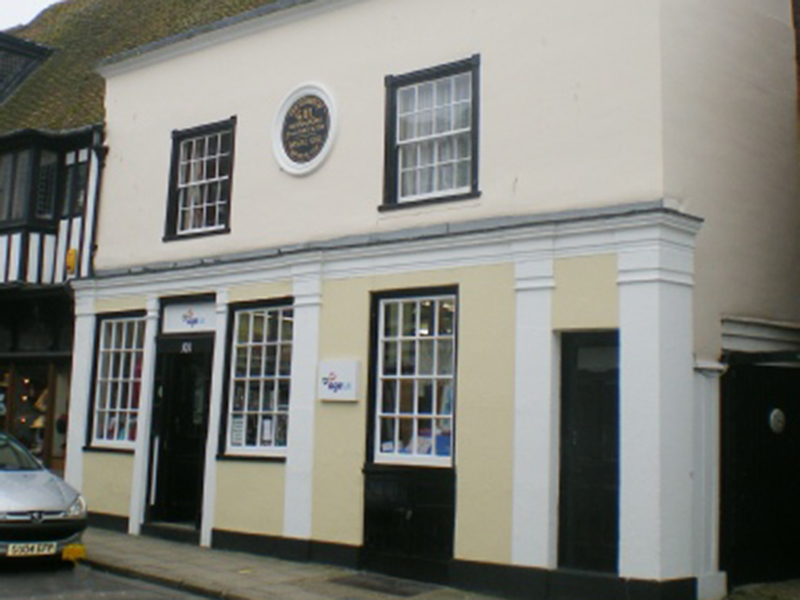The premises at 101 High Street, now the Age UK shop, was occupied by the Gill family of clockmakers from 1680. At the end of the 18th century the government introduced a tax on clocks making them more expensive. As a response many public clocks were erected on private and public buildings.
As you might expect from clocks designed to be publicly displayed, they were often large and solidly built. The Gill family had one of their clocks mounted on the front of their premises in the High Street advertising their business.
A century later the family had become bankers and by about 1820 had moved or died out. The premises then became a beer house and later a public house known as The Dial or Dial House. The name obviously indicated the clock on the front of the building. It was not at first the official name but came into use by public reference to the building. Thus the face of Gill’s public clock became, by a twist of fate, the most unusual pub sign in the town.
The clock has long gone but the (stone) face still reminds us of its earlier years.
Various deeds in the National Archive list some of the occupants and owners of The Dial until 1875. The most well known was Stephen Gilbert Fryman described as a Wine and Spirit Merchant, Dealer and Chapman (ie pedlar or merchant) who in 1852, an election year like now, supplied all of Rye’s pubs and eating houses with free alcohol donated by the candidate to ‘treat’ the voters.
Rye historian H P Clark in his book of 1861 described the scene which occurred during the canvas and election of that year.
‘Public houses were open free to all, and the scenes of dissipation were disgraceful; yet the candidate, like all others, declared that he was protestant and a supporter of religion. There were men and women, boys and girls drunk. Some were brawling drunk, some crying drunk, some singing drunk, some fighting drunk, some stupid drunk, some crazy drunk and some just drunk.’
The pubs of Rye, 1750-1950 by David Russell is available from the Heritage Centre, Adams, The Queen Adelaide or online.
Photos: David Russell





